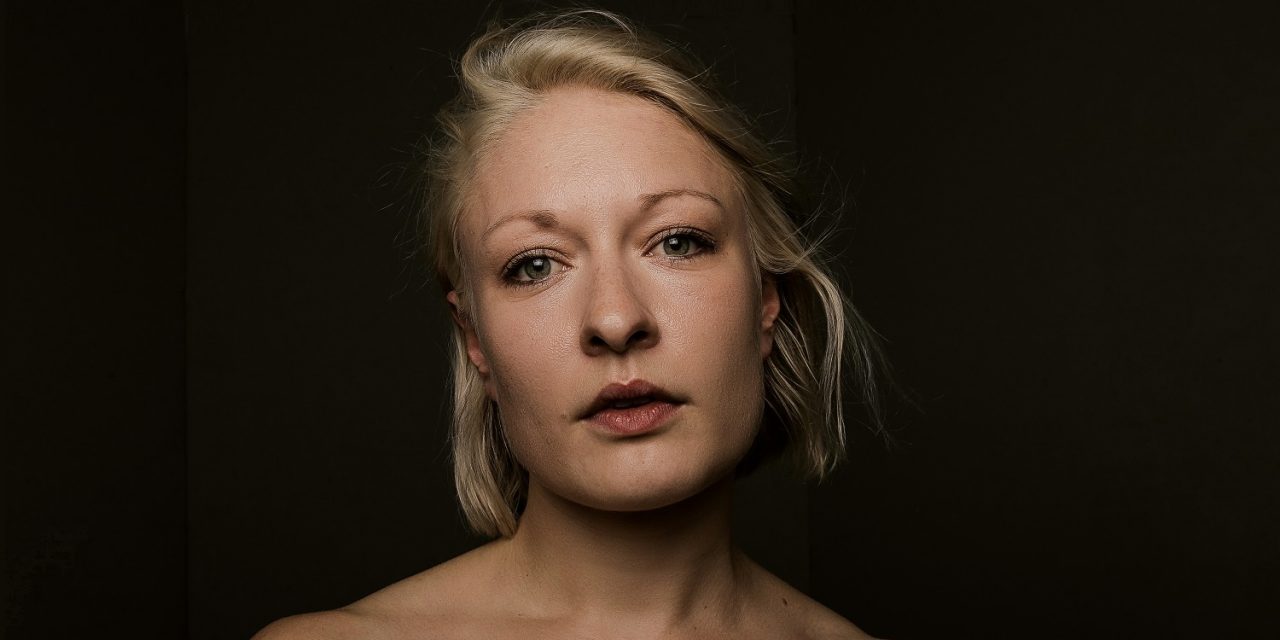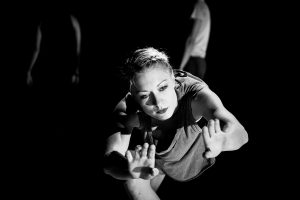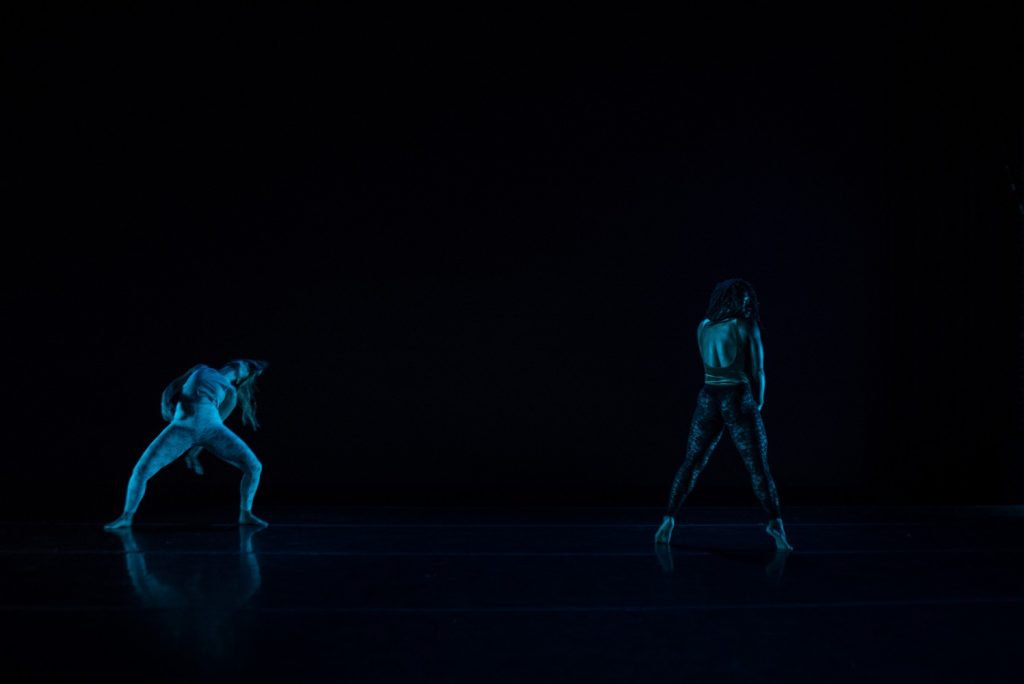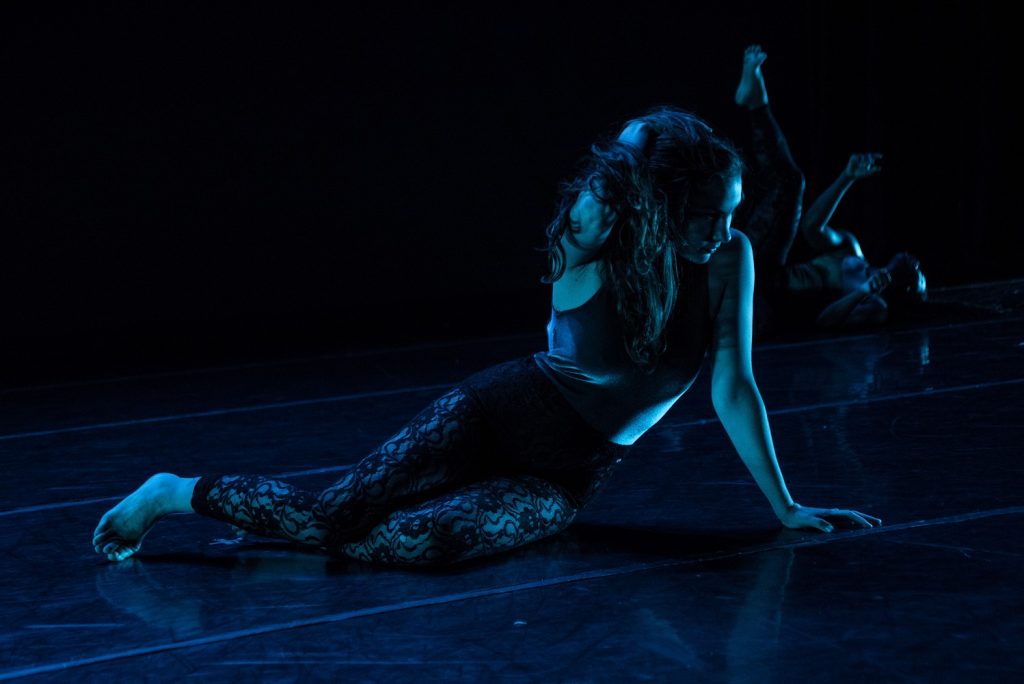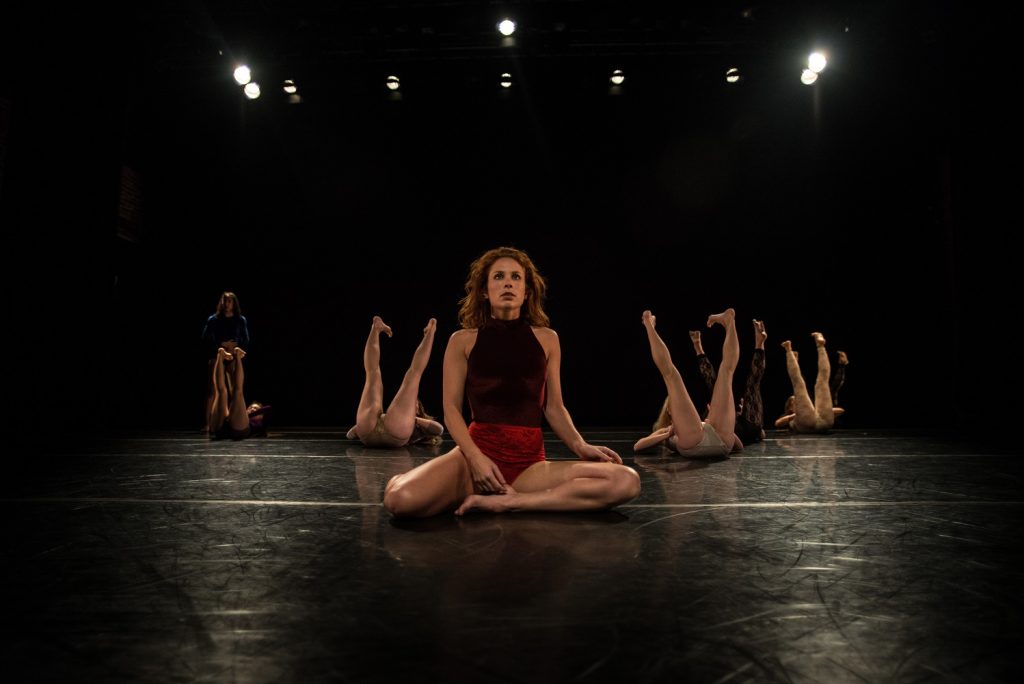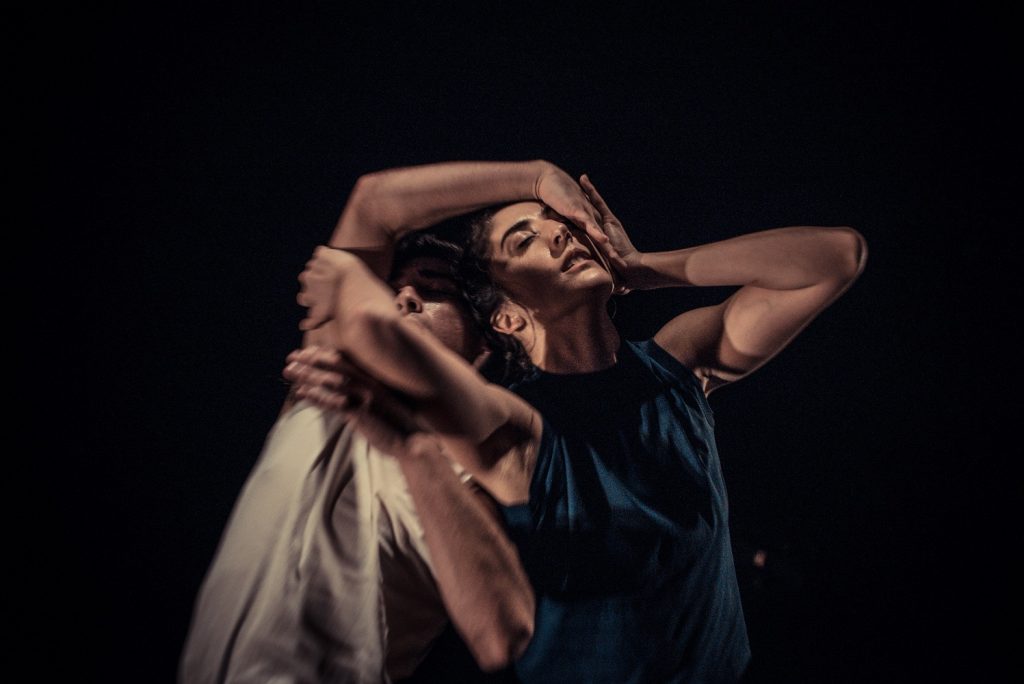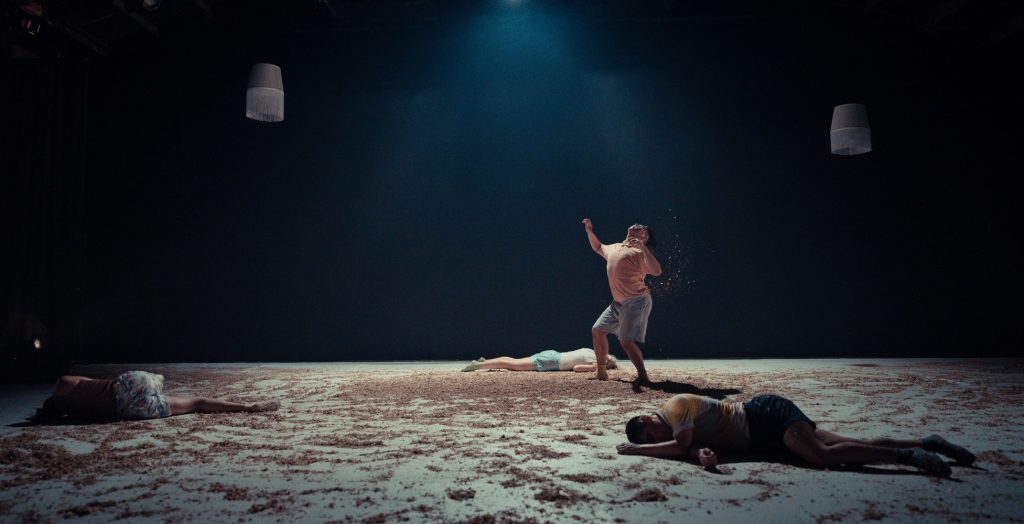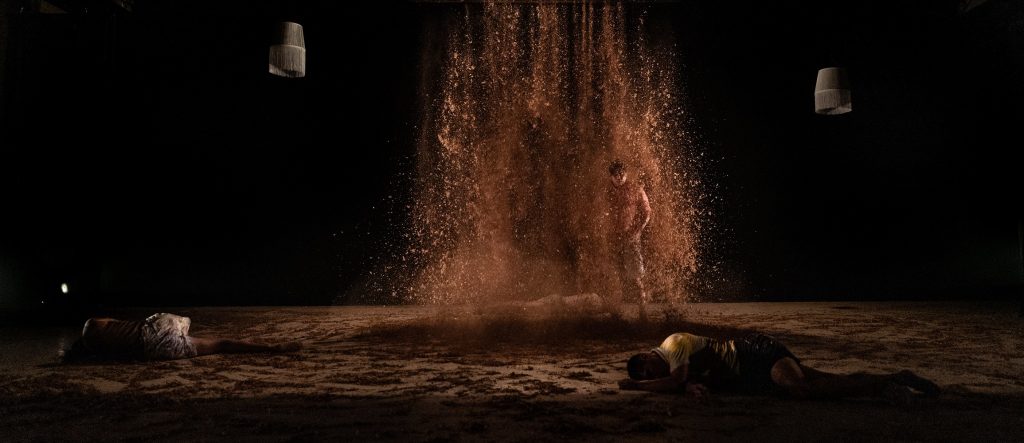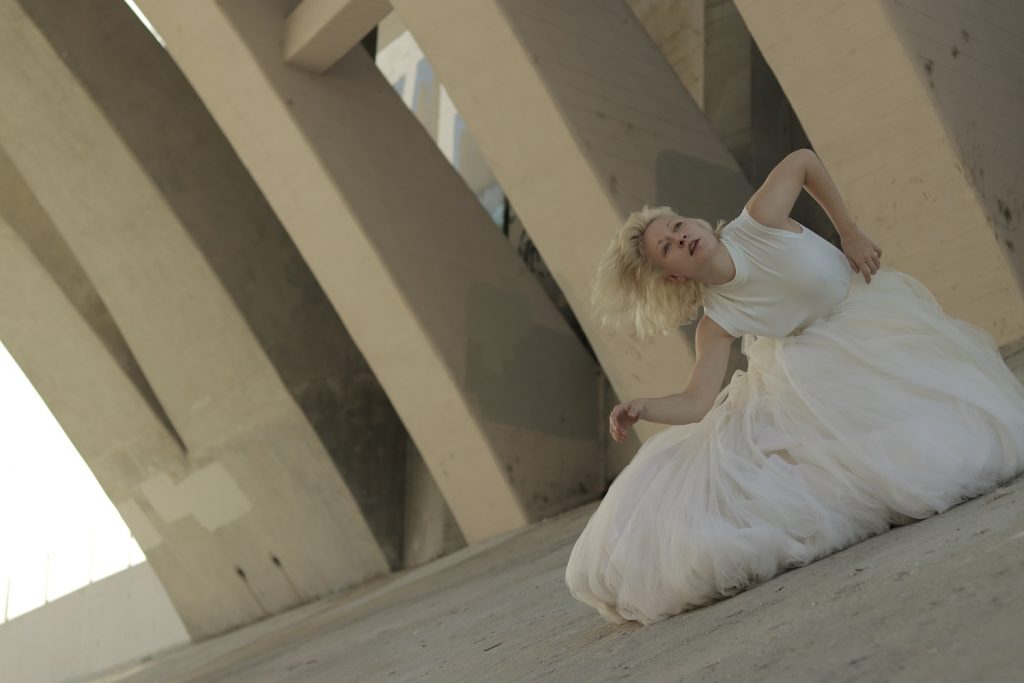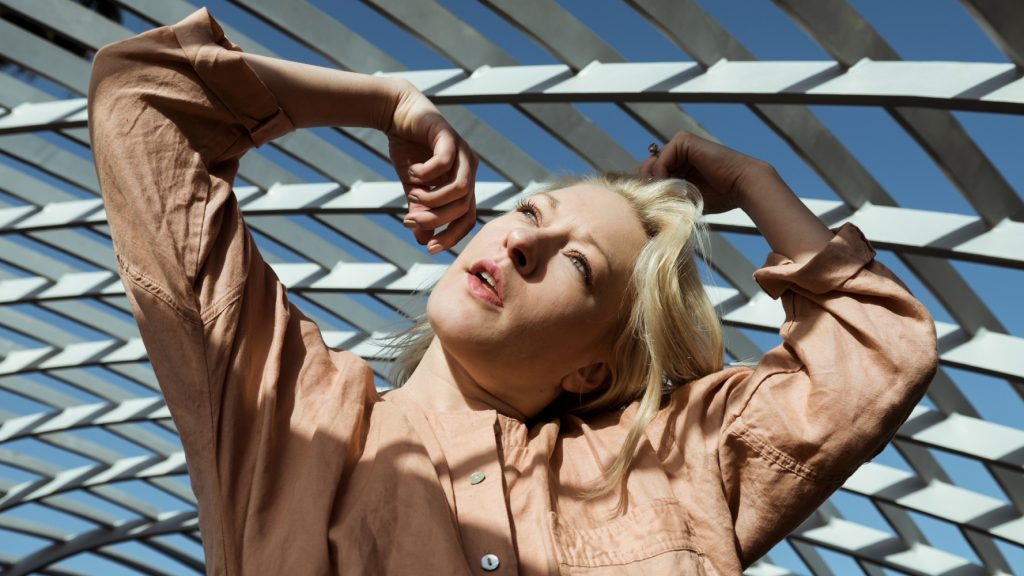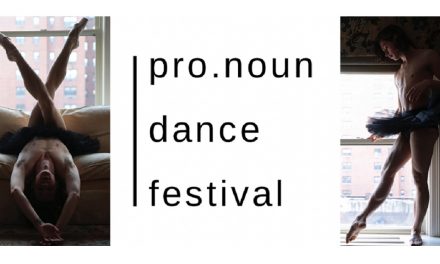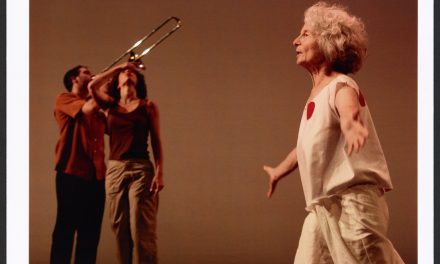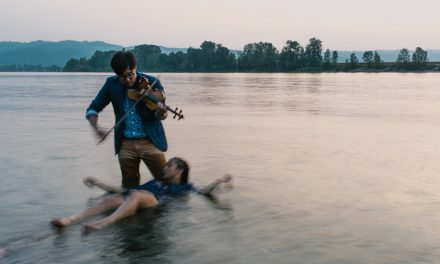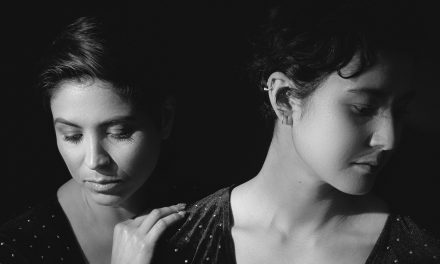Genevieve Carson has been on my list of dance artists that I have wanted to interview for some time. Not just because of her dancing or her choreography, which are stunning, but Carson is one of those people who has always stood out when you see her in a theater lobby or standing in a group of her colleagues and friends. She possesses the ability to turn heads when she enters a room and it is not simply her physical appearance. Often seen without make up, Carson is beautiful yes, but it is her presence that causes one to look her way. That same presence commands one’s attention when she is onstage, and it inhabits her powerful choreography whether she is in that dance or not.
Juneau, Alaska’s capital city, is located on Gastineau Channel in the Alaskan panhandle. What makes it unique among capital cities is that there are no roads connecting Juneau to the rest of Alaska or North America. This beautiful but rugged terrain is where Carson was born and lived until she left for college.
Though she studied ballet, tap and Scottish Highland at one of Juneau’s local dance studios, and performed with her high school’s dance team, it was performing Hip-Hop and Scottish Highland that she most enjoyed. Her opportunities were limited but the Goddess of Dance, Terpsichore called out to Carson and directed her to audition via video for the Dance Department at Chapman University in Orange, California.
“Actually, I was accepted at Chapman and I had a roommate, and everything set up,” Carson said, “when I had a weird flip in my decision making. Carson decided against going to school and instead moved to Seattle for a year. She was 18 years old, living alone for the first time, but soon landed a job with Fusion Dance Company. She learned a lot in Seattle, but fortunately for Los Angeles, she decided to return to California and enroll again at Chapman University. “That year off was really important for me to better understand myself. I knew that I had grown up isolated, and immediately jumping into another confined school situation didn’t feel right.” She said. “I needed space.”
Carson joined Los Angeles Contemporary Dance Company (LACDC) after having performed with String Theory Productions, AXIOM, Rosanna Gamson/Worldwide, kDub Dance, The Big Show Company, Lula Washington Dance Theatre, and Pappas and Dancers. When Kate Hutter approached her about taking over the position of LACDC artistic director, Carson said that she gave it serious thought before saying yes because she knew that it meant giving up much of her role as a dancer and independent choreographer.
It is clear why Hutter chose Carson. Her work has been commissioned and produced by the US Embassies of Buenos Aires and Auckland, ODC Theater, The Luckman Fine Arts Complex, UC Santa Barbara, the LA Convention Center, Musco Center for the Arts, Coachella Valley Repertory Theater, UC Irvine, the Mall of Asia Aren (Manila Philippines), Dance Camera West, Laguna Dance Festival, Super Bowl XLIX and the list goes on. Her film work has been screened at Cannes Film Festival in France, Tiny Dance Film Festival in San Francisco, and Mexico City Videodance Festival in Mexico, to name just a few. Carson understands what she is doing.
After viewing her latest works, The Only Constant (2019), Late Bloomer (2018), and EBBA (2016), it is obvious that Carson has found her own, unique choreographic voice. In no way does her work resemble anyone else’s. I was, however, curious which of the many choreographers she has worked with over the years she thought most influenced her work.
“Every choreographer and company that I’ve worked with has influenced my own process in some way.” Carson answered. “It was very important to me that I had a robust career as a dancer before I dove into the choreographer role and focused on my own process. As a dancer, you learn so much about what kind of leadership is effective in the studio and what kind of environment you thrive in. Being involved in so many different processes allowed me to better understand what kind of leader I strived to be, and what type of studio environment I wanted to establish in my own process.” In answer to my question, Carson replied that she came away with some of the aesthetics of everyone that she worked with and that she appreciates them all.
Like many choreographers, Carson had images of dances moving around in her head from an early age and that choreography has always been a main objective. “I’m obsessed with it” she admitted. Joking aside, Carson spoke to the fact that she works hard at finding a balance between her professional and personal life. We both agreed that dancing is a very demanding art form and that if we are not vigilant, that it often becomes all consuming. Carson joined LACDC in 2009 and is currently in her fourth year as artistic director. She is fully aware of the work involved to maintain the level of commitments that she has agreed to take on. Carson is presently wearing multiple hats: dancer, choreographer, artistic director, teacher and spouse. I asked her why she agreed to the position knowing full well what it would cost her.
“It felt like a natural progression.” Carson said. “I did have to think about it a bit because I was making my own work at the time and I knew that it would change my life as a dancer. It’s a whole different level of commitment and I’ve been slowly mourning the loss of me as a dancer.”
Even with that loss, Carson said that she has learned a great deal about being a director while also growing as a choreographer, and she was ready to transition into a leadership role. We discussed the possibility of her doing both, performing and directing. We also discussed what plagues all dancers, growing older but still wanting to dance.
“I think dancers get better with age.” Carson said. “There’s a wisdom, a maturity, and a depth of character that you see in an older dancer. It’s just different. It comes from life experience combined with an acceptance of self, I think. What makes it magical for me is seeing the unique essence of a dancer — their soul on the stage. Not just technique. Extraordinary things happen when a dancer understands herself or himself as both human and as a mover. The two are symbiotic, really.”
While making her first dance film, Carson fell in love with the process. “Both of the dance films I have made have been with the company (LACDC). The first film was called FAM. It was a collaboration between me, the company, and director Nathan Kim. it premiered as part of my first evening length work (also called FAM) at LA Theater Center in April 2016. We shot it in the abandoned town of Bombay Beach in the Salton Sea.” Carson sent me a brief description of the concept behind FAM.
FAM breathes life into a place, long dead, that holds a forgotten history. Exploring the concept of “making something out of nothing,” FAM celebrates a community’s ability to adapt and move on, to forgive but never forget, to remember always the past even as an ever-changing future arrives anew.
Her second film, entitled BLINK (2018), was also a collaboration between Carson, LACDC, and Nathan Kim. It was captured in one rotating shot and involved only one movement rehearsal before being shot. “I wanted to approach the movement creation differently this time around. I made several vignettes/phrases motivated around themes of support systems/community vs. solitary existence/loneliness and stringed them all together on the day of the shoot. The dancers adapted really beautifully in the moment, and that it ended up becoming this intensely raw film.”
Carson feels that film is a way to capture dance in an entirely different way. “You can rotate around it, get in close and highlight intimate moments. It becomes a 360 experience.”
She also enjoys working in the Commercial arena and has collaborated with Foster the People, Earth Harp Collective, and Funny or Die. Her husband works in the comedy field and with those connections they were able to work with Adult Swim and Comedy Center. Carson’s commercial work includes the Emmy’s, Samsung, TEDX and videos with Justin Bieber, Active Child, French pop artist TESS and more.
“I love doing commercial work!” Carson said smiling. “I really love it, a lot. I love the difference in processes between commercial and concert work. One side of me is the heady, conceptually-driven concert choreographer who dives deep into process, and the other side of me enjoys the fast-pace, results driven commercial realm.” She said she feels that the commercial work helps to invigorate her because it is so different, new and fast paced.
Carson’s work titled EBBA has toured to Buenos Aires, Argentina, and performed at the historic CCK Theater and Teatro Municipal de Lomas de Zamora. Because of the aura of mystery that surrounds Genevieve Carson and the intensity that I witnessed and felt in EBBA, I wanted to find out if the work was drawn from her own persona.
“It’s interesting that you ask,” She said, “because I feel like I have struggled with coming into my own power my entire life, and feeling comfortable in all the layers of who I am. I have always felt a lot of societal pressure to fit into an accepted standard. I think these feelings are universal for women of all backgrounds.”
Although Carson feels that the central theme of EBBA is universal, she said that it did come from a very personal place. When referencing the dance, she mentioned the importance of taking ownership of what we do. How we feel shameful of things that we really should not and questioning what it might feel like to rid ourselves of that shame.
“Like feeling sexual.” Carson added. As a young girl, she considered herself a tomboy but once she got older and boys came into the picture, she began feeling ashamed of that side of herself, and felt compelled to act more like a girl. “I have this boy in me,” she said. “and so, EBBA was an exploration into all of the layers of the female identity. I felt a shift when I turned 30 and realized that I can feel ownership of all of the facets of who I am.”
Carson explained that she created EBBA during the 2016 election period and that Trump was elected president on the dress rehearsal of the work’s premiere. “During the process of EBBA, I felt fueled by the absurdity of his words and actions, and I couldn’t understand why in spite of all that, people were standing behind him.” She said. It was Trump and a lot of other political and social issues going on at the time while Carson was working on EBBA and all those elements found their way into her dance.
“I didn’t know what it was going to turn into. I was just following my instincts.” Carson said. “It was a scary process for me, and it was the first time that I worked with Rob (Robert Amjärv), the composer, in that way. We were both creating in the moment.” She went on to explain how it all came together at the last moment but that the work truly came into its own during the performances. “It really made itself.” Carson added.
EBBA has now been turned into an evening-long piece and during the transition, it has become an entirely different work. I was curious when it would be performed, and she explained that she was setting it on dancers at the American Musical and Dramatic Academy (AMDA) where she has been on faculty since 2012. She had LACDC dancers teach the original version to 12 dancers at AMDA and then broke it up and then reassembled it. She hopes that the newer version will eventually enter into the LACDC repertory.
LACDC recently commissioned three choreographers and their work will first be shown in an informal setting on May 26th before having their official premiere at the Odyssey Theatre in January of 2020. The company is also working on an immersive show to be presented in the fall of this year. She will be working with longtime LACDC company member Drea Sobke to create the show.
“That will be really great for us,” Carson said, “because it won’t be in a traditional space and Drea and I want to collaborate with the dancers on the movement.” One subject that they are interested in is how technology has taken over everyone’s life. Carson mused about the possibility of what it might feel like for people to reconnect, have intimacy, support and understanding versus the current obsession with self or self-promotion while being constantly on the go. She does not dislike technology, but it goes back to our earlier conversation about the necessity of having balance in one’s life.
I asked how she saw her work evolving in the future. “I know that what works best for me is approaching my life intuitively. I’ve become better at following my gut and understanding when things feel right, and when they don’t.” Carson said. “I know that I feel something tingly when I am creating. More specifically, when I’m creating with good people and uplifting them in process.” She told me that she really enjoys highlighting the dancers in her work as humans, not simply paints for her choreographic canvas.
Carson’s work is very human. Sometimes it feels raw like that of one’s nerves set on edge. She causes audiences to think and to participate in her work by allowing themselves to become emotionally involved, rather than simply being entertained.
“I know that I want to keep doing that.” She said. “I want to continue creating work that doesn’t put me in a box and helps me, the dancers and the audience reflect and to feel something. Creating something that is special in that moment and that helps people feel connected and reflective.”
Carson said that she senses that human connection while teaching and that she wants to pass it on to the next generation of dancers, choreographers and teachers. She has much to pass on and I hope that her students realize how fortunate they are to be studying with such a sensitive, gentle, thoughtful and creative artist.
For more information about Genevieve Carson and Los Angeles Contemporary Dance Company, click here.
Featured image: Genevieve Carson – Photo by Malachi Middleton

